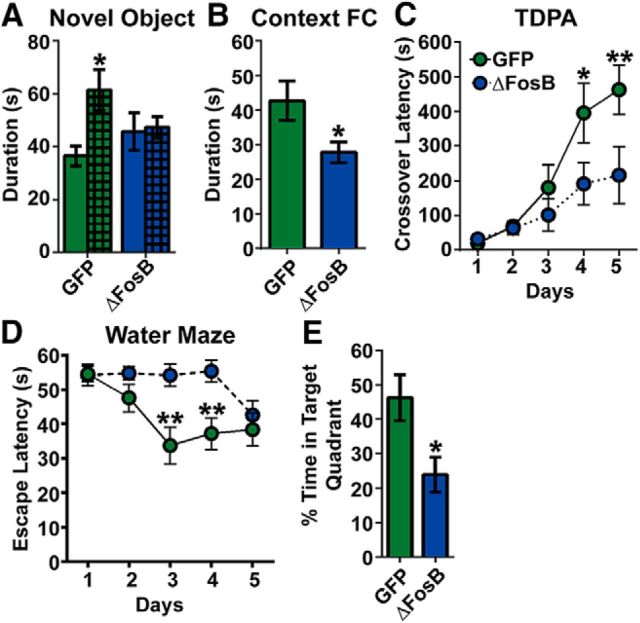Figure 4.
Overexpression of ΔFosB in the hippocampus impairs learning and memory. A, NOR in mice that received stereotaxic hippocampal injections of AAV–GFP (GFP, green; n = 14) or AAV–GFP–ΔFosB (ΔFosB, blue; n = 16). GFP mice spent significantly more time with the novel object than the familiar object (*p < 0.05 compared with familiar), whereas the ΔFosB mice spent an equal amount of time with both objects. B, Contextually fear conditioned (Context FC) freezing (seconds) in AAV–GFP (n = 8) and AAV–GFP–ΔFosB (n = 8) mice. ΔFosB mice had significantly greater contextual freezing (*p < 0.05 compared with GFP). C, TDPA performance was measured in mice that received AAV–GFP (n = 15) or AAV–GFP–ΔFosB (n = 16). ΔFosB mice had significantly lower crossover latency at days 4–5 (*p < 0.05, **p < 0.01, respectively, compared with GFP). D, Spatial learning in the MWM was measured after AAV–GFP (n = 7) or AAV–GFP–ΔFosB (n = 7). Escape latency (seconds) was significantly decreased by ΔFosB at days 3–4 (**p < 0.01 for both days compared with GFP). E, Probe test quadrant time revealed that ΔFosB mice spent significantly less time in the target quadrant (*p < 0.05 compared with GFP). Error bars indicate mean ± SEM.

